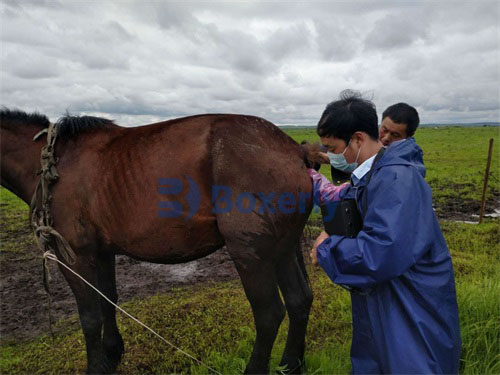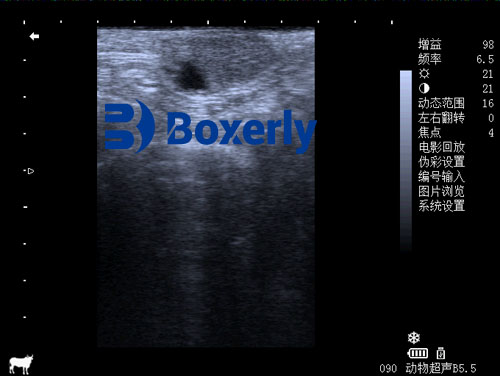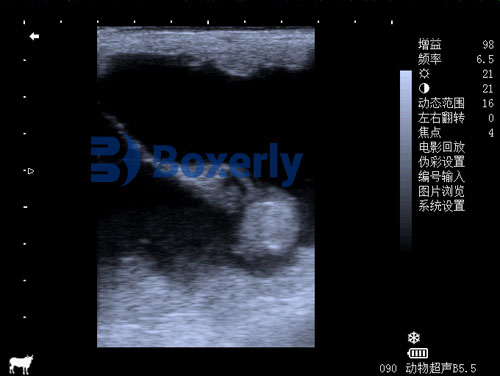As a modern livestock producer, ensuring the health and performance of animals goes beyond feeding and housing—it now heavily relies on precise, real-time diagnostic tools. One of the most powerful innovations adopted globally is real-time ultrasound imaging, which enables farmers and veterinarians to make informed decisions on breeding, disease management, and general animal care. Unlike the outdated “observe and guess” methods, ultrasound allows producers to see inside the animal—safely, instantly, and with remarkable accuracy.

In this article, I will explore how real-time ultrasound imaging is reshaping animal health management on farms, discuss the main benefits, share insights into foreign practices, and explain how this technology leads to better outcomes in productivity, animal welfare, and farm profitability.
Real-Time Ultrasound: A Revolution in On-Farm Animal Health
What Is Real-Time Ultrasound Imaging?
Ultrasound imaging is a non-invasive technology that uses high-frequency sound waves to generate real-time images of internal animal structures. These images allow veterinarians and farm managers to examine organs, monitor pregnancies, diagnose reproductive conditions, and even assess fat or muscle layers. Unlike X-rays or CT scans, ultrasound involves no radiation and can be used directly in the field with portable devices.
Modern livestock ultrasound scanners are designed to be rugged, waterproof, and easily operated by both vets and trained farmers. Real-time B-mode ultrasound, the most widely used format on farms, offers live cross-sectional images that can be instantly interpreted.
How Ultrasound Enhances Animal Health Management
1. Pregnancy Detection and Monitoring
Ultrasound is widely used across cattle, pig, sheep, and goat farms to confirm pregnancy early and accurately. In cattle, pregnancies can be detected as early as 28 days post-insemination. Farmers in the U.S., Europe, and Australia have adopted real-time ultrasound as their go-to method because it reduces false negatives and helps identify twin pregnancies or early embryonic loss.
Early detection allows producers to rebreed non-pregnant animals faster, reducing economic loss and optimizing herd fertility cycles. It also supports welfare, as animals aren’t kept under false assumptions of gestation.
2. Reproductive Health Diagnosis
Real-time ultrasound is a key tool in identifying uterine infections, ovarian cysts, or delayed ovulation—conditions that often go undetected in routine palpation. In dairy herds in the Netherlands, veterinarians use ultrasound weekly to monitor ovarian function, enabling precise hormone treatments and improving conception rates.
For sows, ultrasound allows the assessment of uterine tone and fluid, helping detect postpartum infections or retained placentas. This has become a routine practice in leading pig-producing countries like Denmark and the U.S.
3. Monitoring Growth and Fat Deposition
Ultrasound is now a decision-making tool in fattening operations. Farmers in countries like Canada and New Zealand use ultrasound to measure backfat thickness and eye muscle area to determine the right time for finishing and slaughter.
Measuring parameters like:
-
Eye Muscle Area (EMA): Indicates muscle development
-
Backfat Thickness: Reflects energy reserves
-
Rib and Rump Fat Depths: Track overall fattening progress
These indicators help tailor feeding strategies, reduce feed waste, and ensure animals are marketed at the optimal weight and condition.
How Foreign Producers Use Ultrasound in Herd Management
United States
American cattle ranchers use portable ultrasound units during both breeding and finishing phases. According to the Beef Cattle Institute, ultrasound has increased pregnancy detection accuracy by up to 20% and improved carcass quality by selecting animals based on live muscle and fat profiles.
Germany
In German dairy herds, ultrasound is used during voluntary waiting periods (postpartum) to ensure the uterus has recovered before rebreeding. This reduces involuntary culling and enhances milk production consistency.
Brazil
In tropical systems where heat stress and parasites affect reproductive performance, ultrasound plays a crucial role in detecting delayed ovulation and uterine abnormalities. Brazilian researchers have also integrated ultrasound into AI programs to synchronize and monitor follicle development in cows and heifers.
Australia
Sheep and goat farmers in Australia use ultrasound not only for pregnancy diagnosis but also for fetal aging and sex determination, which helps in early market planning. Lambing percentages have improved significantly on farms using this technology.

Practical Benefits Seen on Farms
Improved Animal Welfare
By allowing early and accurate diagnosis of health problems, ultrasound reduces animal suffering. Conditions such as pyometra, cystic ovaries, or fetal mummification are now diagnosed non-invasively and treated early.
Lower Veterinary Costs
Although there’s an initial cost to ultrasound machines, real-time diagnostics reduce the need for multiple vet visits and help avoid losses from undiagnosed conditions. Many farms report a 10–20% decrease in reproductive failure rates after introducing ultrasound monitoring.
Data-Driven Management
Ultrasound gives farmers quantifiable data. For example, knowing the exact backfat thickness can influence daily feeding rations. In integrated pig farms, this has led to up to 15% feed cost savings during the gestation and lactation periods.
Faster Decision-Making
The ability to immediately interpret results makes ultrasound invaluable during AI, flushing, or embryo transfer procedures. It also allows precise selection of donor and recipient animals based on reproductive status.
Challenges and Limitations
Training Requirements
Ultrasound interpretation requires skill. In countries like the UK, farmers attend short certification courses or collaborate with trained technicians. Poor interpretation can lead to misdiagnosis or improper treatment decisions.
Equipment Cost
While prices have decreased, high-quality ultrasound units still represent a significant investment. However, the long-term savings often outweigh the initial cost.
Weather and Environment
Field use can be hindered by cold, rain, or dust, although modern devices are increasingly weather-resistant. Protective gear and sun visors can mitigate these challenges.
Future Outlook and Innovations
The integration of AI-assisted ultrasound is already in progress. Some new devices can automatically measure ovarian follicles or backfat without user estimation. In the U.S., certain startups are developing cloud-based ultrasound platforms that sync data across farms and vet networks.
Another exciting development is the use of 3D ultrasound for more detailed imaging in breeding and lameness diagnosis. While still under study, this could provide even more precision in real-time diagnostics.
Conclusion
Ultrasound imaging is more than a diagnostic tool—it’s a strategy for smarter, healthier farming. By enabling real-time observation of internal structures, it empowers farmers to act promptly, reduce losses, and care for animals more effectively.
Across the globe, farms that adopt real-time ultrasound enjoy higher reproductive success, better meat quality, and improved animal welfare. As costs decrease and user-friendliness improves, we can expect this technology to become a standard part of livestock health programs.
Real-time ultrasound is not just for veterinarians—it’s a tool every modern farmer should understand and use.

References
-
Beef Cattle Institute (2023). Use of Ultrasound for Growth Evaluation in Cattle. https://www.beefcattleinstitute.org/ultrasound-growth
-
Whitaker, D. A., & Smith, E. (2021). Veterinary Ultrasonography in Food-Producing Animals. Journal of Veterinary Imaging.
-
Veterinary Practice News (2023). Ultrasound Technology Changing Farm Animal Health Care. https://www.veterinarypracticenews.com/ultrasound-farm-health/
-
Australian Livestock Institute (2022). Ultrasound in Sheep and Goat Production.
-
National Hog Farmer (2022). Using Ultrasound in Sow Reproductive Management. https://www.nationalhogfarmer.com/repro-ultrasound